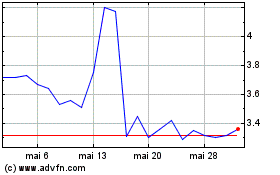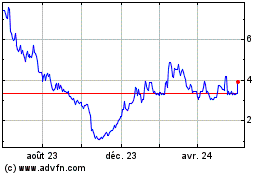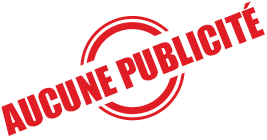– Results Demonstrate Marked Survival
Superiority of Narsoplimab-Treated EAP Patients, in Stand-Alone and
Combined Analyses with Narsoplimab Pivotal Trial Patients, over
External Control Patients –
- Results of statistical analyses of survival in
narsoplimab-treated expanded access program (EAP) TA-TMA patients
compared to similarly at-risk external control registry patients
were consistent with those of previously reported analyses
comparing survival between narsoplimab-treated OMS721-TMA-001
pivotal trial and external control registry patients
- The analyses conducted on the combined population of the 49
previously untreated high-risk adult (at least 16 years of age)
allogeneic-transplant EAP patients and the 28 OMS721-TMA-001
patients were the same as the complete set of primary statistical
and sensitivity analyses comparing survival in the narsoplimab
pivotal trial to the external control TA-TMA patients, with
representative analyses demonstrating that:
- Narsoplimab reduced the risk of mortality in high-risk
TA-TMA patients by over 2-fold (hazard ratio = 0.46 [95 percent
confidence interval:0.30, 0.60]) to approximately 3-fold (hazard
ratio = 0.34 [95 percent confidence interval: 0.21, 0.53])
- P-values ranged from 0.00002 to less than 0.00001
- In the EAP allogeneic transplant population, 16 adult and 20
pediatric high-risk TA-TMA patients had failed one or more
treatment regimens – most commonly eculizumab – prior to receiving
narsoplimab, with 1-year survival of 41 and 47 percent,
respectively – over 2-fold higher than the less-than-20-percent
historical 1-year survival for patients who fail targeted TA-TMA
therapy
- These results complete the set of independently conducted
analyses for inclusion in the narsoplimab BLA resubmission to FDA
planned for later this quarter and in the MAA submission to
European regulators targeted by mid-year. Together with the
previously reported primary and sensitivity analyses, the results
are uniformly robust and support the clinical benefit of
narsoplimab in TA-TMA, a life-threatening complication of
hematopoietic stem cell transplantation with no currently approved
treatment
Omeros Corporation (Nasdaq: OMER) today announced statistical
analysis results related to the expanded access program (EAP) for
narsoplimab, Omeros’ first-in-class monoclonal antibody inhibiting
the lectin pathway of complement, in the treatment of hematopoietic
stem cell transplant-associated thrombotic microangiopathy
(TA-TMA), a life-threatening complication in both adult and
pediatric hematopoietic stem cell transplantation (HSCT). These
latest analyses, conducted by an independent statistical group,
comprise multiple survival comparisons between narsoplimab-treated
EAP patients and similarly at-risk TA-TMA patients in the external
control registry. The results from these analyses further support
the robustness of the previously reported results from the
statistical analysis plan agreed with FDA, with representative
analyses of the combined EAP and pivotal trial patients yielding
hazard ratios ranging from 0.34 (95 percent confidence interval:
0.21, 0.53) to 0.46 (95 percent confidence interval: 0.35, 0.60)
and p-values ranging from less than 0.00001 to 0.00002. Consistent
with all previous clinical experience with narsoplimab, no safety
signals of concern were observed.
“The results from the expanded access program are further
compelling evidence of the effectiveness of narsoplimab in TA-TMA,”
stated Miguel-Angel Perales, MD, Chief of the Adult Bone Marrow
Transplantation Service at Memorial Sloan Kettering Cancer Center
and immediate past President of the American Society for
Transplantation and Cellular Therapy. “The EAP accepted all-comers
globally – adult and pediatric patients in the real-world setting.
Many are representative of the most challenging patients that we at
MSKCC and the community of transplant experts worldwide regularly
attempt to treat. With the now overwhelming clinical survival data
and the absence of any identified safety signal, there is a clear
need for narsoplimab in the treatment of our patients with TA-TMA,
and we look forward to the drug’s rapid approval.”
As reported on December 19, 2024 and January 15, 2025,
narsoplimab met its primary endpoint, with TA-TMA patients in its
OMS721-TMA-001 pivotal trial demonstrating clinically meaningful
and statistically significant superiority in overall survival – a
hazard ratio of 0.32 (95 percent confidence interval: 0.23 to 0.44)
with p-value less than 0.00001 – compared to the TA-TMA patients in
the external control registry, with the prespecified
primary-related sensitivity analyses strongly supporting the
robustness of the primary analysis results. Today’s announcement
reports the results of this same set of analyses on patients
treated with narsoplimab in the EAP. Overall survival in the
primary, primary-related, and EAP-related analyses includes an
adjustment for immortal time bias.
The narsoplimab EAP population at time of database lock included
136 TA-TMA patients, 128 of whom had received allogeneic versus
autologous stem cell transplants. Of those allogeneic graft
recipients, 84 were adult (at least 16 years of age) and 44 were
children. TA-TMA risk factors are not available for all EAP
patients; based on available information and using the
international expert consensus criteria for high risk of death
(Schoettler et al, 2023), 102 patients (65 adults and 37 children)
were characterized as having “high-risk” TA-TMA, with 82 percent of
adults and 86 percent of children having multiple risk factors for
death. Of the 102 high-risk EAP patients, 49 adults and 13 children
had received no treatment prior to narsoplimab.
The narsoplimab pivotal trial (OMS721-TMA-001) enrolled 28 adult
allogeneic transplant patients with high-risk TA-TMA, none of whom
received prior treatment for TA-TMA.
The external control registry is comprised of 121 adult patients
(defined by the registry as 16 years of age or older) who underwent
allogeneic transplant and developed high-risk TA-TMA, none of whom
received narsoplimab, any other complement inhibitor treatment, or
defibrotide.
The following are representative analyses, conducted by the
independent statistical group, of the 77 (49 EAP and 28
OMS721-TMA-001) allogeneic HSCT, previously untreated, high-risk
adult patients who received narsoplimab compared to similarly
at-risk external control registry patients; the first is the same
as the previously reported primary analysis and the subsequent 4
are the same as the previously reported primary-related sensitivity
analyses, all of which were prespecified in the FDA-agreed
statistical analysis plan:
1.
Overall survival using Inverse Probability
of Treatment Weighting (IPTW) with all specified risk factors:
Hazard ratio = 0.37 (95 percent confidence
interval: 0.28, 0.48)
P-value < 0.00001
2.
Overall survival using IPTW with only
treatment as a factor:
Hazard ratio = 0.46 (95 percent confidence
interval: 0.35, 0.60)
P-value < 0.00001
3.
Testing proportional hazards assumptions
using IPTW in a sequence of four models in which patient follow-up
is truncated at 100 days, 6 months, 1 year, and 2 years:
100 days:
Hazard ratio = 0.46 (95 percent confidence
interval: 0.33, 0.63)
P-value < 0.00001
6 months:
Hazard ratio = 0.40 (95 percent confidence
interval: 0.29, 0.54)
P-value < 0.00001
1 year:
Hazard ratio = 0.37 (95 percent confidence
interval: 0.28, 0.50)
P-value < 0.00001
2 years:
Hazard ratio = 0.36 (95 percent confidence
interval: 0.27, 0.48)
P-value < 0.00001
4.
Overall survival using IPTW with day zero
for the external control registry patients set at the median time
between the date of TA-TMA diagnosis and the date of narsoplimab
treatment initiation for the patients in the combined EAP and
OMS721-TMA-001 pivotal trial population:
Hazard ratio = 0.36 (95 percent confidence
interval: 0.28, 0.48)
P-value < 0.00001
5.
Overall survival with and without all
specified risk factors (RFs) using 1:1* propensity score matching
(combined EAP and OMS721-TMA-001 trial patients versus external
control registry patients):
1:1 with RFs:
Hazard ratio = 0.34 (95 percent confidence
interval: 0.21, 0.53)
P-value < 0.00001
1:1 w/out RFs:
Hazard ratio = 0.39 (95 percent confidence
interval: 0.26, 0.60)
P-value = 0.00002
*In the previously reported primary and
primary-related sensitivity analyses, this analysis included 1:2
propensity score matching. The 121 external control patients,
however, do not allow for 1:2 matching vs. 77 narsoplimab-treated
patients.
Sixteen adult and 20 pediatric allogeneic-transplant EAP
patients with high-risk TA-TMA had failed treatment with one or
more regimens of eculizumab, ravulizumab, pegcetacoplan, and/or
defibrotide prior to administration of narsoplimab. Less than 20
percent of patients who fail these treatments are reported to reach
1-year survival. Despite this historically poor expectation,
narsoplimab treatment showed the following 1-year survival in
previously treated high-risk EAP patients:
- All: 44 percent
- Adult: 41 percent
- Children: 47 percent
In the EAP, 49 adult and 13 pediatric allogeneic-transplant
patients with high-risk TA-TMA did not receive complement C5 (e.g.,
eculizumab, ravulizumab), C3 inhibitors (e.g., pegcetacoplan), or
defibrotide prior to treatment with narsoplimab. One-year survival
in these patients is:
- All: 62 percent
- Adult: 58 percent
- Children: 79 percent
“The EAP results of narsoplimab treatment for TA-TMA are
exceptional, both for patients who received narsoplimab as
first-line treatment and particularly in patients refractory to
prior complement inhibition therapies,” stated Michelle Schoettler,
MD, Assistant Professor of Pediatric Oncology and Hematopoietic
Cellular Therapy at Emory University. “One-year survival in
children with high-risk TA-TMA treated with narsoplimab via the EAP
as a front-line agent was an impressive 79 percent and 58 percent
in adults. Just as striking were results in patients previously
refractory to complement inhibition, who historically had 1-year
survival rates of less than 20 percent. In contrast, 1-year
survival in refractory children and adults in the EAP cohort with
high-risk features treated with narsoplimab (n=36) was 44 percent;
more than doubling historic cohorts. These promising results
suggest that narsoplimab will be an important therapeutic option
for pediatric and adult hematopoietic cell transplant recipients. I
look forward to publishing and further detailing the benefits of
narsoplimab in children and adults enrolled in the EAP.”
In addition to the manuscript on EAP-related analyses, an
international group of transplant experts is preparing a manuscript
directed to the primary endpoint-related analyses for submission to
peer-reviewed journals.
“We are pleased to see the results of the narsoplimab EAP
analyses for our BLA resubmission,” said Gregory A. Demopulos,
M.D., Omeros’ Chairman and Chief Executive Officer. “The
EAP-related and primary sensitivity analyses uniformly support the
positive results of the primary endpoint – narsoplimab
demonstrating clinically meaningful and statistically significant
superiority in overall survival compared to the external control.
The next step is resubmission of our BLA followed by the planned
submission of the narsoplimab MAA for European approval. There is
more work to be done, but the entire Omeros team is driving hard to
achieve approval and to launch narsoplimab, with the goal of making
the drug available to patients and their transplant physicians
worldwide.”
About Narsoplimab
Narsoplimab, also known as “OMS721,” is an investigational fully
human monoclonal antibody targeting mannan-binding
lectin-associated serine protease-2 (MASP-2), a novel
pro-inflammatory protein target and the effector enzyme of the
lectin pathway of complement. Importantly, inhibition of MASP-2 has
been demonstrated to leave intact the antibody-dependent classical
complement activation pathway, which is a critical component of the
acquired immune response to infection. A biologics license
application (BLA) is pending before the FDA for use of narsoplimab
in the treatment of hematopoietic stem cell transplant-associated
thrombotic microangiopathy (TA-TMA). Omeros will resubmit the BLA
for narsoplimab in TA-TMA followed by our planned submission of the
corresponding European marketing authorisation application (MAA) in
2025. FDA has granted narsoplimab breakthrough therapy and orphan
drug designations for TA-TMA and orphan drug status for the
prevention (inhibition) of complement-mediated thrombotic
microangiopathies. The European Medicines Agency (EMA) has granted
orphan drug designation to narsoplimab for treatment in
hematopoietic stem-cell transplant.
About Hematopoietic stem cell transplant-associated
thrombotic microangiopathy (TA-TMA)
Hematopoietic stem cell transplant-associated thrombotic
microangiopathy (TA-TMA) is a significant and often lethal
complication of stem cell transplantation. This condition is a
systemic, multifactorial disorder caused by endothelial cell damage
induced by conditioning regimens, immunosuppressant therapies,
infection, graft-versus-host disease, and other factors associated
with stem cell transplantation. Endothelial damage, which activates
the lectin pathway of complement, plays a central role in the
development of TA-TMA. The condition occurs in both autologous and
allogeneic transplants but is more common in the allogeneic
population. In the United States and Europe, approximately 30,000
allogeneic transplants are performed annually. Recent reports in
both adult and pediatric allogeneic stem cell transplant
populations have found an approximately 40-percent incidence of
TA-TMA, and high-risk features may be present in up to 80 percent
of these patients. In severe cases of TA-TMA, mortality can exceed
90 percent and, even in those who survive, long-term renal sequalae
(e.g., dialysis) are common. There is no approved therapy or
standard of care for TA-TMA.
About Omeros Corporation
Omeros is an innovative biopharmaceutical company committed to
discovering, developing and commercializing first-in-class
small-molecule and protein therapeutics for large-market and orphan
indications targeting immunologic disorders, including
complement-mediated diseases and cancers, as well as addictive and
compulsive disorders. Omeros’ lead MASP-2 inhibitor narsoplimab
targets the lectin pathway of complement and is the subject of a
biologics license application pending before FDA for the treatment
of hematopoietic stem cell transplant-associated thrombotic
microangiopathy. Omeros’ long-acting MASP-2 inhibitor OMS1029 has
successfully completed Phase 1 single- and multiple-ascending dose
clinical studies. Zaltenibart, Omeros’ inhibitor of MASP-3, the key
activator of the alternative pathway of complement, is advancing
toward Phase 3 clinical trials for paroxysmal nocturnal
hemoglobinuria and complement 3 glomerulopathy. Funded by the
National Institute on Drug Abuse, Omeros’ lead phosphodiesterase 7
inhibitor OMS527 is in clinical development for the treatment of
cocaine use disorder. Omeros also is advancing a broad portfolio of
five novel cellular and molecular immuno-oncology programs. For
more information about Omeros and its programs, visit
www.omeros.com.
Forward-Looking Statements
This press release contains forward-looking statements within
the meaning of Section 27A of the Securities Act of 1933 and
Section 21E of the Securities Exchange Act of 1934, which are
subject to the “safe harbor” created by those sections for such
statements. All statements other than statements of historical fact
are forward-looking statements, which are often indicated by terms
such as “aim,” “anticipate,” “believe,” “could,” “estimate,”
“expect,” “goal,” “intend,” “likely,” “look forward to,” “may,”
“objective,” “plan,” “potential,” “predict,” “project,” “should,”
“slate,” “target,” “will,” “would” and similar expressions and
variations thereof. Forward-looking statements, including
statements regarding the anticipated resubmission of the BLA for
narsoplimab in the United States and the submission of a marketing
authorization application with the EMA, the timing and outcomes of
regulatory events, the availability and outcomes of additional
analyses, the prospects for obtaining FDA or EMA approval of
narsoplimab in any indication, expectations regarding future cash
expenditures, and expectations regarding the sufficiency and
availability of our capital resources to fund current and planned
operations, including the potential commercialization of
narsoplimab if it is approved by FDA or the EMA, are based on
management’s beliefs and assumptions and on information available
to management only as of the date of this press release. Omeros’
actual results could differ materially from those anticipated in
these forward-looking statements for many reasons, including,
without limitation, unfavorable, unexpected or inconclusive results
of our statistical analyses relating to an external registry of
TA-TMA patients, potential differences between the diagnostic
criteria used in our pivotal trial and in the external registry,
and whether FDA and the EMA determine the registry used in our
statistical analysis is sufficiently representative of TA-TMA
patients, unanticipated or unexpected outcomes of regulatory
processes in relevant jurisdictions, unproven preclinical and
clinical development activities, our financial condition and
results of operations, regulatory processes and oversight,
challenges associated with manufacture or supply of our products to
support clinical trials, regulatory inspections and/or commercial
sale following any marketing approval, changes in reimbursement and
payment policies by government and commercial payers or the
application of such policies, intellectual property claims,
competitive developments, litigation, and the risks, uncertainties
and other factors described under the heading “Risk Factors” in our
Annual Report on Form 10-K filed with the Securities and Exchange
Commission on April 1, 2024, an in our subsequently filed Quarterly
Reports on Form 10-Q. Given these risks, uncertainties and other
factors, you should not place undue reliance on these
forward-looking statements, and we assume no obligation to update
these forward-looking statements, whether as a result of new
information, future events or otherwise, except as required by
applicable law.
Dr. Miguel-Angel Perales has previously received advisory
services compensation from, and holds a financial interest in,
Omeros. Dr. Michelle Schoettler has previously received advisory
services compensation from Omeros.
View source
version on businesswire.com: https://www.businesswire.com/news/home/20250220420439/en/
Jennifer Cook Williams Cook Williams Communications, Inc.
Investor and Media Relations IR@omeros.com
Omeros (NASDAQ:OMER)
Graphique Historique de l'Action
De Jan 2025 à Fév 2025

Omeros (NASDAQ:OMER)
Graphique Historique de l'Action
De Fév 2024 à Fév 2025


